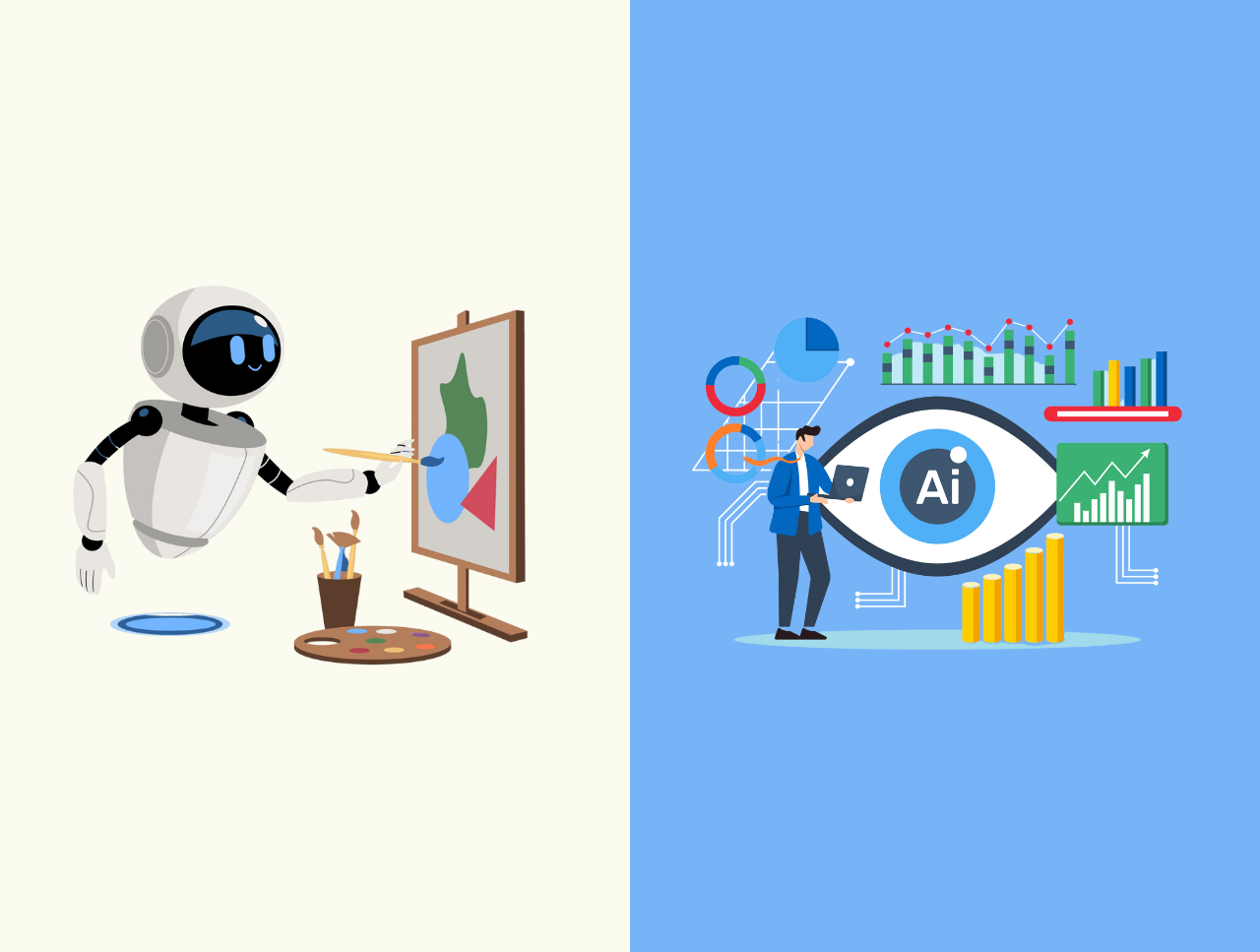Artificial Intelligence (AI) has become a cornerstone of technological innovation, driving advancements across industries and transforming the way we interact with technology. Among the various branches of AI, two have gained significant attention for their unique capabilities: Generative AI and Predictive AI. While both are integral to modern AI applications, they serve distinct purposes and operate on different principles. In this comprehensive guide, we will explore the differences between Generative AI and Predictive AI, delving into their methodologies, applications, and the value they bring to businesses and individuals.
The Foundations of AI: An Overview
Before diving into the specifics of Generative and Predictive AI, it is essential to understand the broader context of artificial intelligence. AI encompasses a wide range of technologies designed to mimic human intelligence. These technologies can perform tasks such as learning, reasoning, problem-solving, and understanding natural language. The core of AI lies in machine learning, where algorithms are trained on large datasets to recognize patterns and make decisions.
Generative AI: Creating from Scratch
Generative AI refers to algorithms that can create new content or data similar to the input data they were trained on. This branch of AI uses models known as Generative Models, which can generate text, images, music, and even entire videos. The most well-known types of generative models include Generative Adversarial Networks (GANs), Variational Autoencoders (VAEs), and Transformer-based models like GPT-3.
How Generative AI Works
Generative AI models learn the underlying patterns of the input data and use this knowledge to generate new, similar data. For instance, GANs consist of two neural networks: a generator and a discriminator. The generator creates new data samples, while the discriminator evaluates their authenticity compared to real data. Through this adversarial process, the generator improves over time, producing increasingly realistic outputs.
Applications of Generative AI
Generative AI has a wide range of applications, including:
– Content Creation: AI-generated content, such as articles, blog posts, and social media content, can help businesses maintain an active online presence.
– Art and Design: Artists and designers use generative AI to create unique artworks, designs, and even animations.
– Music Composition: Generative AI can compose music, offering new tools for musicians and producers.
– Game Development: Game developers use generative AI to create realistic characters, landscapes, and scenarios.
– Data Augmentation: In machine learning, generative AI can create synthetic data to augment training datasets, improving model performance.
Predictive AI: Forecasting the Future
Predictive AI, on the other hand, focuses on analyzing historical data to predict future outcomes. This branch of AI uses machine learning algorithms to identify patterns and trends in data, enabling it to make predictions about future events. Common types of predictive models include linear regression, decision trees, and neural networks.
How Predictive AI Works
Predictive AI models are trained on historical data, learning to identify correlations and patterns. Once trained, these models can make predictions about new data inputs. For example, a predictive model trained on sales data can forecast future sales based on current market trends and consumer behavior.
Applications of Predictive AI
Predictive AI is widely used across various industries, including:
– Finance: Predictive models help forecast stock prices, assess credit risk, and detect fraudulent transactions.
– Healthcare: Predictive AI can predict disease outbreaks, patient outcomes, and treatment effectiveness.
– Marketing: Businesses use predictive analytics to forecast customer behavior, optimize marketing campaigns, and personalize offers.
– Supply Chain Management: Predictive AI helps companies forecast demand, manage inventory, and optimize logistics.
– Retail: Retailers use predictive models to forecast sales, manage inventory, and analyze consumer trends.
Key Differences Between Generative AI and Predictive AI
Objective: The primary objective of Generative AI is to create new data that closely resembles its training data, focusing on creative outputs such as generating text, images, or music. It is driven by the goal of producing content that mimics the characteristics of the input data. In contrast, Predictive AI aims to forecast future outcomes based on historical data. This involves identifying patterns and correlations within the data to make accurate predictions about future events, such as market trends, customer behavior, or disease outbreaks.
Methodology: Generative AI employs models like GANs and VAEs, which involve a process of creating new data samples and refining them through iterative adversarial techniques. This methodology allows the generation of realistic and high-quality outputs. Predictive AI, on the other hand, utilizes models such as regression, decision trees, and neural networks. These models focus on analyzing past data to identify trends and predict future occurrences, providing valuable insights for decision-making processes.
Applications: Generative AI finds its applications predominantly in creative fields, such as content creation, art, music composition, and game development, where the generation of new, unique outputs is essential. In contrast, Predictive AI is commonly applied in industries that rely heavily on forecasting and analysis, including finance, healthcare, marketing, and supply chain management. The ability to predict future outcomes allows businesses in these sectors to optimize strategies and operations.
Data Utilization: Generative AI generates entirely new data, often requiring large datasets to train the models effectively and produce high-quality outputs. This capability is particularly valuable in areas where creating original and diverse content is crucial. Predictive AI, however, focuses on analyzing existing data to identify patterns and predict future events. It relies heavily on historical data for training and validation, making it an indispensable tool for industries that require accurate forecasting and risk assessment.
Output Nature: The outputs of Generative AI are creative and novel, such as new images, music, or written content that did not exist before. These outputs can be unique and varied, reflecting the creative potential of the model. In contrast, Predictive AI produces analytical outputs, such as forecasts, predictions, and risk assessments. These outputs are used to inform decisions, guide strategic planning, and assess potential risks and opportunities.
Bridging the Gap: The Intersection of Generative and Predictive AI
While Generative and Predictive AI are distinct, there are areas where they intersect and complement each other. For instance, predictive models can be used to identify patterns in generated data, improving the quality and relevance of generative outputs. Conversely, generative models can augment predictive models by creating synthetic datasets for training, enhancing the model’s accuracy and robustness.
Generative and Predictive AI represent two powerful branches of artificial intelligence, each with unique capabilities and applications. Generative AI excels in creativity and content generation, while Predictive AI shines in forecasting and decision-making. Understanding the differences between these two types of AI is crucial for businesses and individuals looking to leverage AI technologies effectively.
At Nuclay Solutions, we specialize in developing cutting-edge AI solutions that harness the power of both Generative and Predictive AI. Whether you’re looking to create innovative content or make data-driven decisions, our team of experts can help you navigate the complexities of AI and unlock new opportunities for growth and innovation. Explore our offerings and discover how we can assist you in leveraging the full potential of AI technologies.



